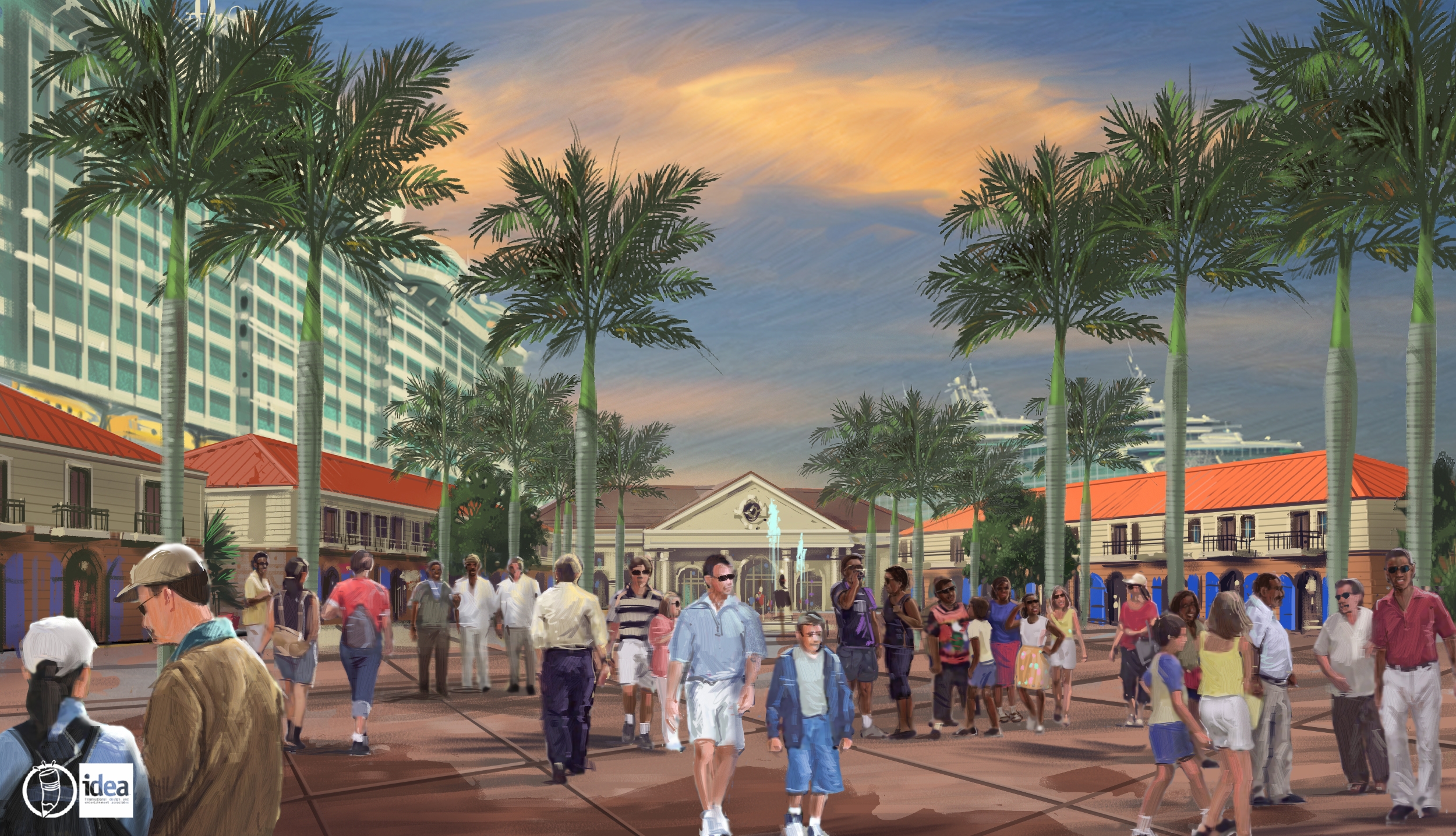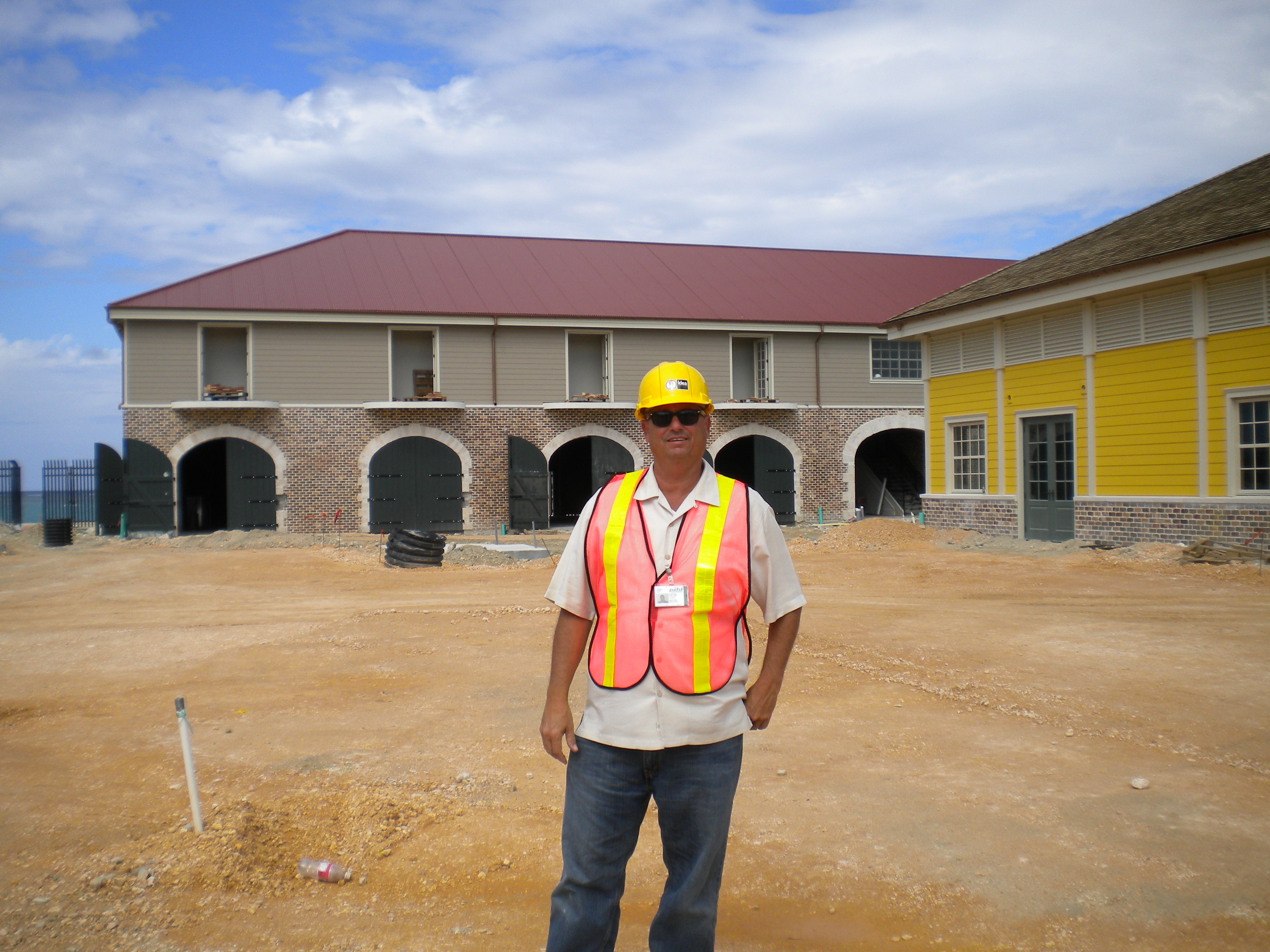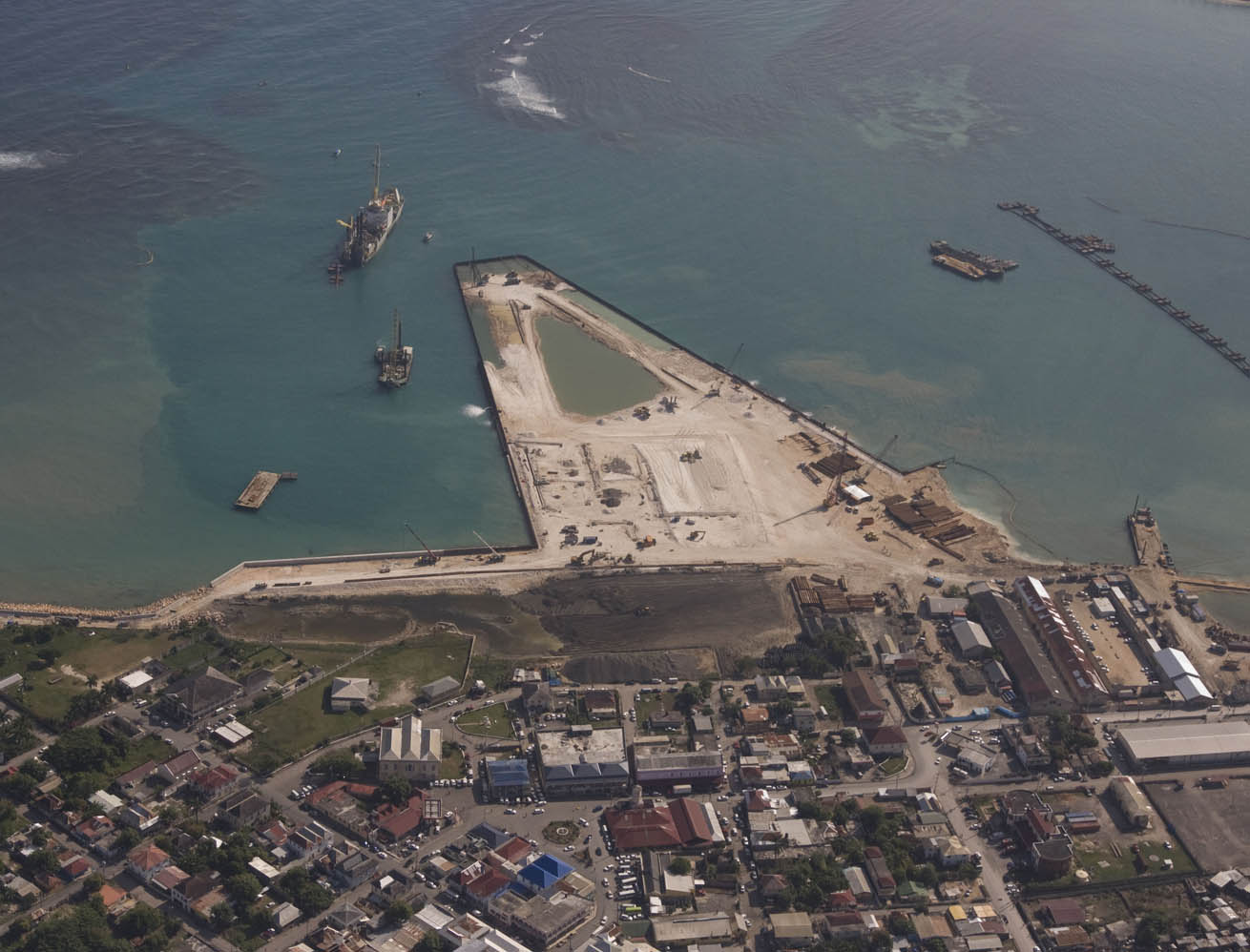People have been telling me for years I need to write things down, or write a book. As many of you know I’m traveling more than I’m in the office and there is never a big chunk of time where I can focus, so I thought, why not start a blog. Every two weeks I’ll share with you what I’m up to and talk to you about the many projects my company, IDEA Inc., (International Design and Entertainment Associates) are working on or lessons we’ve learned along the way. This first post comes from the heart and may not be politically correct, but will be honest.
The port development in Falmouth was the biggest project we and my associates at IDEA have worked on – in terms of the impact it will have to an entire country and their tourism. The destination port took more than five years to create, during which time IDEA’s role evolved. We started in 2004 as the creator and vision planner, then as the designer and architect, and were retained by Royal Caribbean as the owner’s representative based in Jamaica.

Prince Charles visits Falmouth, March 2008. Left to right: Hugh Darley, President, IDEA, Ed Bartlett, Minister of Tourism of Jamaica, Captain Hopeton DeLisser, Port Authority of Jamaica, Camilla Parker Bowles and Prince Charles. Photo credit: Daily Gleaner
We are so proud to have been involved at the very inception of this project that will bring to light the deep history and culture of Jamaica that has not been embraced in such a way before. The frustrating thing for us was that the whole story of the project was never told, and unfortunately many of the explanations about what was done and why have been forgotten. Falmouth enabled us to preserve a piece of the country’s history and celebrate the unique and rich culture of Jamaica. The results haven’t been realized yet, but they soon will be.
Top 10 untold stories in the development of Historic Falmouth, Jamaica:
1. Location choice was determined by geography, not politics
Most people think that the choice of Falmouth as the location for the port was a political decision but it was more about the design, depth and maneuverability needed to accommodate large Oasis-class vessels.
The Port Authority of Jamaica asked IDEA to undertake a nation wide search to find a place for a new port where additional berths could be added or created to accommodate large vessels. We scoured the country and the frontrunners became Falmouth, Port Antonio and Lucea.
Jamaica plays a large role in the Western Itinerary for cruise lines. Adding two additional high quality berths or “parking spaces” now allow more lines to call in Jamaica. With existing preferential berthing arrangements and limited berths in Montego Bay and Ocho Rios lines already in the market can limit new lines entering by blocking dates thus limited competition. Falmouth, it turned out offered the most potential for adding the two new berths, it was already a national historic area and the Port Authority of Jamaica made the decision that this would be the best location for the port.
2. Protecting a sleepy town from the adverse effects of a mega development
The town of Falmouth was a busting city 150 years ago in the height of the sugar and rum trade. Our job was to ensure that the 200 or more historic buildings that remained would be protected and we could integrate the new port with the existing town and its residents. My personal agenda was to make the town and its people a central part of the concept; thus embracing the port as their own.
3. Convincing historic community leaders why the project would not adversely affect the history and culture of Jamaica
This was one of the hardest goals for us to accomplish. In fact, we wanted to embrace the history and use it as the benchmark for all of our decisions. That’s why we branded the port “Historic Falmouth Jamaica”. Everything we designed was based on how the port looked and operated in 1850.
4. Getting public acceptance from the local community
We recognized early on that the Port of Jamaica’s plans were not aligned with the socio-economic impact that the project would have on the community. I knew it would be so important for us to try to help the Jamaican community understand the positive impact of the port. Jamaicans really need to be able to embrace concepts like this. They often see foreign investment coming but in the past they have not improved the local community and the local economy. We had to come up with a concept that would do that. We wanted them to know that the port would be part of their city and not an all-inclusive resort.
5. The promise of developing a large–scale project with minimal environmental impact
Once we understood the socio-economic impact we had to look at the environmental impact. A large Environmental Impact Assessment was underway that proved the science of the bay was intact and the development of the port would not adversely impact it. We knew that the Martha Brae River and the bioluminescence of Glistening Waters had to be preserved. We conducted a town hall meeting with over 400 people attending and we were able to show the effort that we had gone to, proving to many of the locals that were concerned that we’d done our homework.
6. Becoming the bridge between the commercial and government interests through public lobbying
We embarked on a year-long series of meetings in Jamaica to help build a public lobby that would support the government’s decisions to support the Port Authority and Royal Caribbean’s initiates and promote the new port. At that time both Royal Caribbean and the Port of Jamaica were our clients.
7. Adhering to historical guidelines and recreating a Georgian town
We knew we wanted Falmouth to represent what the port city was during its heyday. It took years of historical research to accurately recreate a town 150 years ago. The building height was very important. We worked within the framework we were given by the Jamaican National Heritage Trust– to make sure that no building is larger in mass than the Courthouse, and no structure is higher than the Anglican Cathedral. Beyond that, we designed and planned the town to make it look as though it was a neighborhood as part of the city. We were able to blend the new design with the existing architecture – something I was very happy about.
8. Delays, no decisions or bad decisions
As our design management of the project is now over it has been frustrating to watch as the ownership team delay critical decisions or make bad or uninformed decisions, taking the project off schedule and omitting some details. Even worse is what happens when the general contractor is left to make design decisions for a project like this that relies so heavily on authenticity to recreate the Georgian design.
9. Fulfilling commercial interests with a sensitivity to local interests
For us, this was one of the toughest emotional aspects of the project. The two stakeholders, the Port Authority of Jamaica and Royal Caribbean, had very different objectives. Royal Caribbean in particular, had a lack of social understanding and respect for the sensitivity to the interests of the local parish government, the people of Trelawny, and the country in general. Our role was a complicated one as we negotiated many hurdles along the way, going above and beyond our role as architect, designer, planner and owner’s representative. The cruise line, also has very different economic goals and agenda. Their interests don’t necessarily align at all with the interests of the local economy and national tourism, so it has been a tough balance.
10. Cruise lines should not manage destinations.
Falmouth is really no different managing a small city. Unfortunately in November of this year, we were allowed and encouraged to exit the project early prior to completion. The challenge will be for the operator, working on behalf of Royal Caribbean to complete the project and manage it successfully with no professional designer on board to assist in final design decisions. It is no different than the socio economic challenges required to managing a public space like Colonial Williamsburg. Typically cruise lines don’t have the training and experience required to run a community, and if it is run like an all inclusive resort it’s economic good for the people of the community will be lessened.
Falmouth will create a world tourism stage so that Jamaicans can tell their story, in a authentic historical context and in a clean, organized and designed environment. The perception of Jamaica has not been one will a lot of positives and I know that this project will create a new paradigm with an immediate positive impact.
If you have comments or questions about this topic I’d love to hear them. Please post them below.
Facts about the port of Historic Falmouth, Jamaica
• Historic Falmouth is the largest purpose-built port of call in the Caribbean
• It can accommodate 16,000 passengers
• The arrival area can accommodate 4,000 passengers
• Two ships at a time can be in port
• It can accommodate both Oasis and Freedom-class ships
• It is/will be featured on Western Caribbean cruises for Holland America, Royal Caribbean and Celebrity
• Princess Cruises & smaller lines are considering using the port






